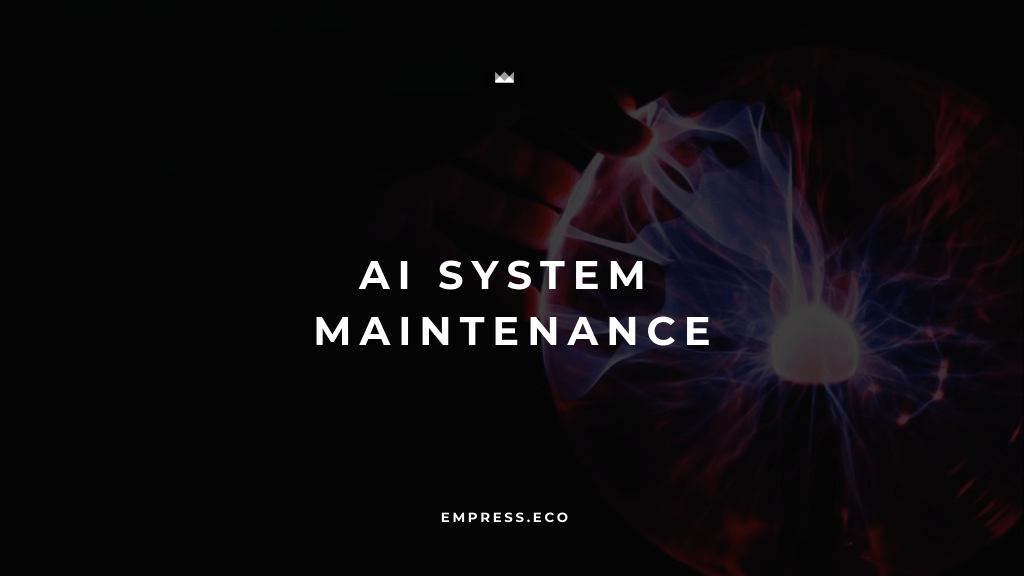In today’s fast-paced business environment, where every second counts, finding ways to streamline operations is critical. One of the most effective ways to achieve this is through workflow automation. By leveraging technology to handle repetitive tasks, businesses can save valuable time, reduce costs, and ultimately enhance their overall efficiency. But how exactly can workflow automation transform your operations? Let’s explore the key benefits, strategies for implementation, and the challenges you might encounter along the way.
The Power of Workflow Automation
Think about the countless hours your team spends on routine tasks—inputting data, generating reports, or processing invoices. These tasks, though essential, often take up a significant portion of your employees’ time, limiting their ability to focus on more strategic activities that drive growth. Workflow automation offers a solution to this problem by using technology to handle these repetitive processes, allowing your team to redirect their efforts toward higher-value tasks.
Imagine a world where your employees are no longer bogged down by manual, time-consuming processes. Instead, they’re free to innovate, strategize, and contribute to the core objectives of your business. This is the promise of workflow automation—a promise of efficiency, accuracy, and significant cost savings.
Key Benefits of Workflow Automation
1. Significant Time Savings
One of the most immediate benefits of workflow automation is the substantial time savings it offers. Tasks that once took hours can be completed in minutes, if not seconds, thanks to automated processes. For instance, consider the time spent on data entry. Manually inputting data into spreadsheets or CRM systems is not only time-consuming but also prone to errors. By automating this process, you can eliminate the need for manual input, allowing data to flow seamlessly from one system to another without human intervention.
Let’s say your sales team spends several hours each week manually entering lead information into your CRM system. With automation, this process can be streamlined—leads generated from online forms, emails, or social media can be automatically captured and organized in your CRM, freeing up your sales team to focus on nurturing and closing deals.
2. Substantial Cost Reduction
Workflow automation doesn’t just save time—it also leads to significant cost reductions. When tasks are automated, the need for manual labor decreases, which means fewer resources are required to perform the same functions. Additionally, automation reduces the likelihood of costly errors, such as data entry mistakes or missed deadlines, which can lead to financial losses.
For example, if your accounting department manually processes hundreds of invoices each month, there’s a risk of errors that could result in overpayments or missed payments. Automating the invoice processing workflow ensures that invoices are processed accurately and on time, reducing the risk of financial discrepancies and the associated costs.
Moreover, by automating tasks like report generation or inventory management, businesses can cut down on overtime hours and reduce the need for additional staff, directly impacting the bottom line.
3. Increased Accuracy and Consistency
Human error is an inevitable part of manual processes. Whether it’s a typo in a data entry field or a miscalculation in a report, these mistakes can have significant consequences. Workflow automation eliminates the risk of human error by ensuring that tasks are completed with precision and consistency.
Consider a scenario where your HR department is responsible for onboarding new employees. Manually managing the onboarding process—sending welcome emails, setting up accounts, and scheduling training sessions—can lead to inconsistencies. Automating this workflow ensures that every new hire receives the same onboarding experience, with no steps missed, creating a more consistent and professional introduction to your company.
4. Enhanced Productivity
When routine tasks are automated, your employees are free to focus on activities that require critical thinking, creativity, and strategic insight—areas where human ingenuity truly shines. This shift from mundane tasks to more meaningful work can significantly boost overall productivity.
For instance, your marketing team might spend a lot of time scheduling social media posts across multiple platforms. By automating this task, your team can focus on creating compelling content, analyzing campaign performance, and engaging with your audience—activities that are far more impactful in driving business growth.
Moreover, automation tools can work around the clock, ensuring that tasks are completed even outside of regular business hours. This continuous operation maximizes productivity and ensures that your business is always moving forward.
Implementing Effective Workflow Automation
Implementing workflow automation requires careful planning and a strategic approach. Here’s how you can successfully integrate automation into your business operations:
1. Identify Key Tasks for Automation
The first step in implementing workflow automation is identifying which tasks are the best candidates for automation. Not every process can or should be automated, so it’s important to evaluate which tasks are repetitive, time-consuming, and prone to errors.
Common tasks that are ideal for automation include:
- Data Entry: Automating data entry can significantly reduce errors and speed up the process.
- Invoice Processing: Automating this ensures timely and accurate payments.
- Customer Support Responses: Chatbots and AI can handle common customer inquiries, freeing up your support team for more complex issues.
- Report Generation: Automated reports save time and ensure data accuracy.
- Employee Onboarding: Automating onboarding can create a consistent experience for all new hires.
- Marketing Email Campaigns: Automation tools can schedule and send targeted emails based on customer behavior.
- Social Media Posting: Tools can automatically schedule posts across platforms, maintaining a consistent online presence.
- Inventory Management: Automating stock levels and reordering processes ensures you never run out of essential products.
2. Assess Potential Savings
Once you’ve identified tasks for automation, it’s important to assess the potential time and cost savings. This assessment will help you prioritize which workflows to automate first, based on the expected return on investment (ROI).
For example, if automating data entry can save your team 10 hours per week, that’s time that can be redirected to more strategic activities. Similarly, if automating invoice processing can reduce the risk of costly errors, the long-term savings could be substantial.
3. Select the Right Automation Tools
With a clear understanding of the tasks you want to automate and the potential savings, the next step is to select the appropriate automation tools. There are countless automation solutions available, so it’s important to choose tools that align with your specific needs and integrate seamlessly with your existing systems.
Consider the following when selecting automation tools:
- Ease of Use: Choose tools that are user-friendly and require minimal training for your team.
- Scalability: Ensure the tool can grow with your business and handle increased workloads as needed.
- Integration: The tool should integrate smoothly with your current software and systems to avoid disruption.
- Support: Look for tools that offer robust customer support and regular updates to keep your workflows running smoothly.
Popular automation tools include Zapier for connecting apps and automating workflows, UiPath for robotic process automation (RPA), and HubSpot for marketing automation. The key is to find the tools that best fit your business’s unique needs.
4. Implement and Monitor
After selecting the right tools, it’s time to implement the automation processes. This phase involves setting up the workflows, configuring the tools, and integrating them with your existing systems. During implementation, it’s crucial to test each workflow thoroughly to ensure it functions as expected and doesn’t interfere with other processes.
Once the workflows are live, continuous monitoring is essential. Regularly review the automated processes to ensure they are performing as intended and delivering the expected benefits. It’s also important to gather feedback from employees who interact with the automated systems to identify any areas for improvement.
5. Optimize and Scale
Automation is not a one-time task—it’s an ongoing process that requires regular optimization. As your business grows and evolves, your workflows may need to be adjusted to remain efficient and effective. Regularly evaluate your automated processes to identify any bottlenecks or inefficiencies and make necessary adjustments.
For example, if your customer service chatbot is frequently unable to answer specific types of inquiries, it might be time to update the AI’s knowledge base or integrate it with a human support team for complex issues. Similarly, as your business expands, you may need to scale your automation efforts to handle increased workloads or support new services.
Challenges and Considerations
While the benefits of workflow automation are clear, there are also challenges that businesses must navigate to ensure successful implementation:
1. Initial Investment
Implementing workflow automation often requires an upfront investment in technology and training. While the long-term savings can be substantial, it’s important to budget for the initial costs and ensure that the investment aligns with your business’s financial strategy.
When calculating the ROI of automation, consider not only the direct cost savings but also the value of the time saved, the reduction in errors, and the potential for increased productivity. These factors can help justify the initial expenditure and demonstrate the long-term benefits.
2. Change Management
Introducing automation into your workflows can be a significant change for your team, and change is often met with resistance. Effective change management is crucial for ensuring a smooth transition. This involves clear communication about the benefits of automation, providing adequate training, and addressing any concerns employees may have.
It’s important to frame automation as a tool that enhances employees’ roles rather than replaces them. By emphasizing how automation can take over mundane tasks and allow employees to focus on more strategic, rewarding work, you can help ease the transition and encourage buy-in from your team.
3. Data Security and Privacy
With automation often involving the handling of sensitive data, ensuring data security and privacy is paramount. Automated processes must be designed with robust security measures to protect against data breaches and comply with relevant regulations.
When implementing automation tools, choose solutions that offer strong encryption, access controls, and compliance with data protection standards such as GDPR or HIPAA, depending on your industry. Regularly audit your automated processes to ensure they remain secure and up to date with the latest security protocols.
Conclusion
Workflow automation offers a powerful opportunity for businesses to streamline operations, save time, and reduce costs. By automating repetitive tasks, companies can enhance efficiency, improve accuracy, and free up valuable resources for more strategic activities. However, successful implementation requires careful planning, selecting the right tools, and ongoing optimization.
As the landscape of business continues to evolve, those who embrace automation will be better positioned to stay competitive, drive innovation, and achieve long-term success. Workflow automation isn’t just about doing things faster—it’s about doing them smarter, with precision and consistency that manual processes simply can’t match.
In the end, the goal of workflow automation is to create a more agile, efficient, and productive business environment where your team can focus on what they do best—innovating, strategizing, and delivering exceptional value to your customers. By taking the time to thoughtfully implement automation, you can unlock new levels of efficiency and drive your business forward.



